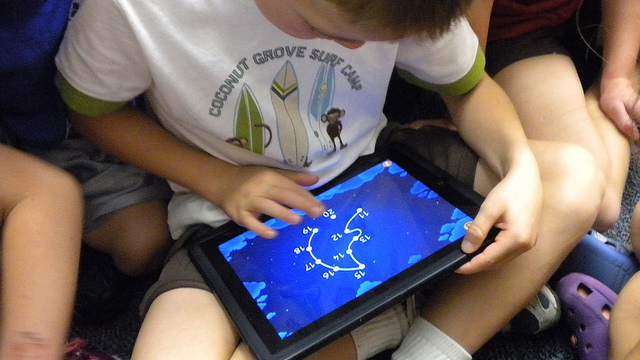By Matt Levinson
As the explosive growth of tablets finds its way to schools, teachers and administrators need to continue the work of figuring out how to best incorporate tablets into the learning experience of students.
Managing tablets as learning tools in the classroom is not easy, especially when many kids use them largely as toys outside of school, if they have access to a tablet in their home environment. Kids often come to school and instinctively want to engage with a tablet as a toy, expecting to be free to play the games they want to play and explore the apps they are interested in.
To get kids to shift into tablet as learning tool, teachers are finding that instilling fair, reasonable and consistent classroom habits in tablet learning environments is key.
Here are a few strategies to employ to facilitate positive tablet learning habits:
- Be clear with students at the outset of class whether tablets will be used that day. If tablets are not part of the learning plan for the day, just let students know that by saying, "We are device-free today, so please find a resting place for your tablet." This approach quickly takes the pressure off of the teacher.
- If you are going to use the tablets with students, be prepared to move and engage a lot. Tablet-learning requires a lot of energy on the part of the teacher and a high level of engagement and interaction with students. Plan on weaving in and out of students as they work on the tablets so you can ask questions, probe, query, challenge and inquire.
- Carefully consider space. Keeping students close together in a circle or a series of circles with tablets flat and easily viewable helps to maintain focus. For younger students, having the tablet on the surface of the floor makes it easy for the teacher to see the screens. Dispersing students around the classroom or outside opens up a can of worms in terms of management, unless the goals and objectives are clear for students, with a well-defined time frame for completion of a learning task.
- Talk about the uses for tablets: creation, consumption, curation, and connection. Be clear with students about the purpose for the class. The use of the tablet for the class might be to create, or it might be to consume, or it might involve curation or gathering of sites around a particular topic, like government, with the opportunity to teach media literacy, or it could be used to connect to resources and to their peers.
- Build an appropriately sized app library for the tablets. Too many apps can be overwhelming and too few can be limiting. Employ the Goldilocks rule to find the just right menu of apps for the tablets. As the school year winds down, ask your students which apps they found most useful to help you figure out how to modify the menu for next year.
- Capture learning. Tablets present a wonderful opportunity for teachers to capture the magic moment that happens in a class discussion or activity. Have students be prepared to record their conversations or take photos of the learning process. Build a class library of positive learning moments that are happening with tablets so you can build on the positive behaviors, instead of harping on negative behaviors.
- Accountability is key. Whatever the exercise, purpose or goal of the learning takingplace with tablets, be sure to expect a result at the end of the class and have students share their work with the learning community so that the classroom is a "collaboratory.
- Be confident and remember that you are the adult in charge of the learning environment. There is no need to let the tablet abdicate your authority. If a student breaks trust or acts inappropriately, be fair and consistent with consequences, as you would be with other behaviors.
- Be patient and take small steps. It does not all have to happen at once.
Schools can continue to keep learning and growing and recognizing that tablets are a new learning tool. As with any new tool, there are growing pains and it's a natural and healthy process to go through for teachers and schools. At the end of the day, focusing on new habits with persistence will help to create a positive tablet learning environment for students and teachers.


